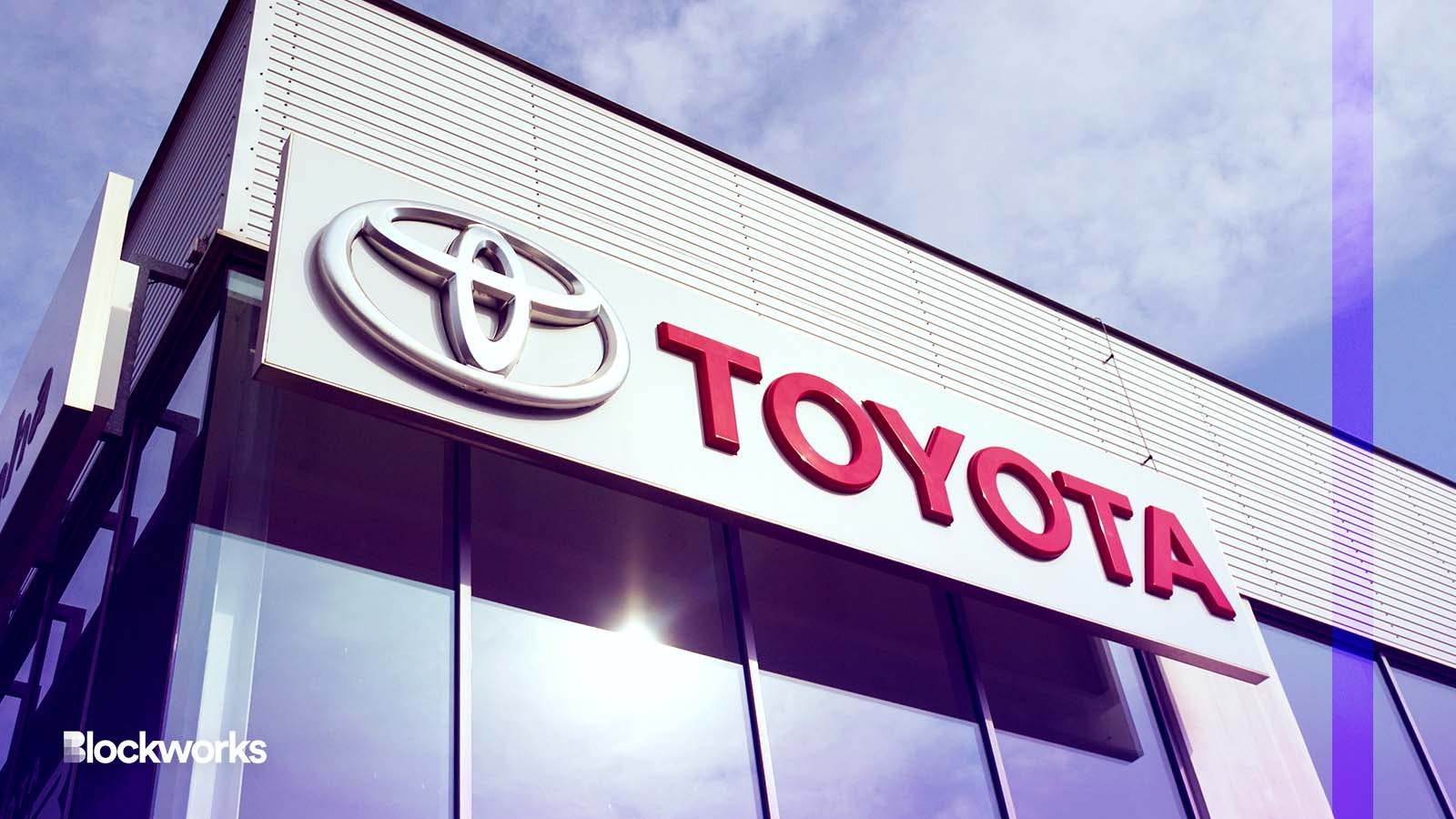Toyota Tests Developer Skills on Popular Japanese Blockchain
A global online hackathon, sponsored by Toyota, aims to produce “intra-company DAO support tools” for the auto giant

josefkubes/Shutterstock.com modified by Blockworks
Little known outside of Japan, Astar Network, a blockchain in the Polkadot (DOT) ecosystem, has gotten noticed by one of the world’s largest private enterprises: Toyota Motor Corporation.
A developer hackathon, which starts on Feb. 25, will be held in a metaverse environment on the Astar Network with Toyota as its main sponsor and one of the judges evaluating participating teams.
The amount of Toyota’s sponsorship was not disclosed, but the Astar Foundation and the Polkadot-focused Web3 Foundation are kicking in $75,000 and $25,000, respectively.
Making it in Japan
Shun Ishikawa, chief operating officer at Astar Network, told Blockworks that the Japanese market is “unique” on account of “its inherent language and cultural differences.”
“Entering and doing business in the Japanese market is very different from doing it in other countries,” he said.
Astar’s founder Sota Watanabe hails from the country, and Isikawa said the team works closely with top Japanese brands and Japanese politicians, helping Astar to become a leader in the Japanese blockchain market.
A non-scientific Twitter poll by the Japan Blockchain Association (JBA) in December found that, of 332 respondents, a plurality chose Astar as the chain they would most like to use over alternatives Polygon, Solana and Avalanche.
It was also chosen as “product of the year” for 2022 by the JBA. Watanabe was the JBA’s “person of the year.”
He appeared on a recent cover of Forbes Japan, and regularly touts his political connections on Twitter.
Wantanabe’s efforts have grown the smart contract platform’s brand recognition in Japan, even as the growth in Polkadot as a whole has stagnated.
Although Astar has grown to become the largest parachain by total-value locked (TVL), at around $42 million, that figure is about a tenth of its peak TVL in April 2022, data from DefiLlama shows.
Only 34 parachain auctions have actually taken place on Polkadot, far fewer than the 100 initially envisioned.
Polkadot itself has averaged 30 active monthly developers over the past year, according to GitHub activity data of main branch repositories, collected by The Tie, about half that of Cosmos, and a small fraction of Ethereum’s active devs.
Momentum in 2021, fueled by the March announcement from Compound Labs of a multi-chain initiative using Polkadot’s Substrate, stalled in 2022, alongside backpedaling from Compound.
Polkadot governance forums have little activity, and founder Gavin Wood stepped down in October from the CEO role at Parity Technologies, the ecosystem’s leading development shop.
Still, Astar’s native token ASTR has performed well in 2023, up more than 50% since the turn of the new year, beating the performance of both DOT and bitcoin.
Is WASM the future?
In the realm of smart contract coding, the Ethereum Virtual Machine, and its programming language, Solidity, dominates.
Astar instead uses WebAssembly (WASM), as do smart contract chains in the Cosmos ecosystem. WASM has some key advantages, chief among them, the ability to write smart contracts in a variety of popular programming languages such as C/C++, GO, TypeScript and RUST, which potentially opens Web3 to a larger developer community.
WASM proponents like Astar network also tout its potential to be faster and more secure than Solidity, although the verdict is far from in on that score.
Polkadot’s own EVM-compatible chain, Moonbeam, recently celebrated its one-year anniversary, but in a crowded EVM landscape (even wholly unrelated projects like Cardano and Algorand have EVM-based projects), it’s hard to be a standout.
Polkadot’s answer to Cosmos’ IBC protocol, XCM, is a pale shadow of its rival in terms of economic value moving around. The top 10 parachains across both Polkadot and its sister network Kusama registered about $2.3 million in inbound transfer volume over the past 7 days, according to polkaholic.io. IBC’s top 10, in the same span, collectively are more than 20x greater.
Astar hopes its latest tech novelty, called Cross-Virtual Machine (XVM) will catch on, letting developers build dapps that are interoperable between the EVM and WASM smart contracts.
But for now, the future of Astar Network looks very much linked to the personal networking of its charismatic founder.
The winners of the Web3 hackathon will be announced following a “pitch event” on March 25.
Spencer Hughes and Ryan West contributed reporting.
This story was updated on Feb. 1, 2023 at 12:00 pm ET with additional data on XCM and IBC transfers, provided by Moonbeam, and Feb. 2, 2023 at 1:25 pm ET to clarify developer activity.
Get the news in your inbox. Explore Blockworks newsletters:
- The Breakdown: Decoding crypto and the markets. Daily.
- 0xResearch: Alpha in your inbox. Think like an analyst.






